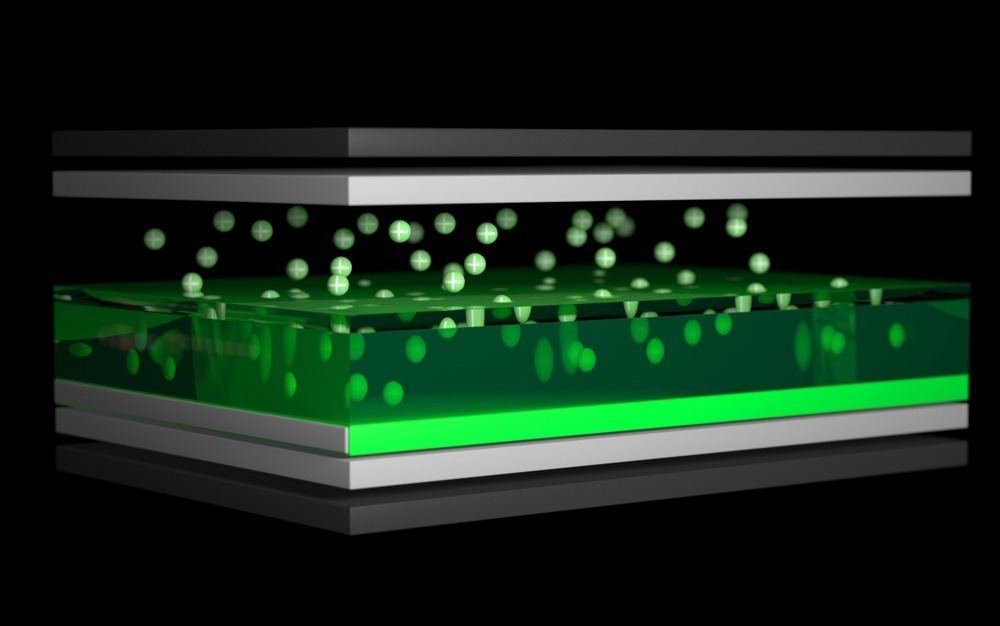Nanostructured materials have been a particularly promising area of battery research, particularly with respect to electrode materials research. When used in electrodes, nanostructured materials offer a number of advantages, including superior ion transportation, greater contact surface, and unique electrochemical reactions. These benefits translate into significant improvements in energy storage technology.
Image Credit: nevodka/Shutterstock.com
What Are Nanoporous Nanomaterials?
Nanoporous nanomaterials are nanostructured materials comprised of a framework and a regular, highly porous structure with pores that are 100 nm or smaller. These materials generally come in two forms: bulk materials like activated carbon or membranes. Cell membranes, for example, are generally considered a type of nanoporous nanomaterial. Nanoporous membranes have the unique ability to allow certain substances to pass through, blocking out other substances.
Battery researchers have been interested in nanoporous materials because of their attractive qualities. In particular, they are a promising electrode material because of their surface morphology, high conductivity, energy storage efficiency, and consistent framework.
Use of Graphene in Battery Research
Having the thickness of a single atom, graphene is a carbon material with excellent electrical conductivity, and it is a promising material for battery research. Although lithium-ion batteries are the standard for so many applications and they continue to grow in power density, researchers have struggled to improve their charging times. In addition to offering faster charging times, graphene batteries also offer the potential for greater energy storage.
Lithium-ion batteries involve lithium ions being transferred between a cathode and an anode through a liquid electrolyte. This process can be undesirably slow during recharging. These batteries can be improved by coating the cathode with graphene, allowing more ions to transfer and increasing the speed of charging.
In 2016, Chinese company Dongxu Optoelectronic Technology debuted a laptop-type battery made with graphene that could be fully charged in 15 minutes and could be recharged as many as 3,500 times. Graphene can also be used to produce silicon-based anodes that boost a battery’s storage capacity.
Why is Nanoporous Graphene Relevant to Battery Research?
Graphene is usually impermeable and introducing nanoscale pores gives it unique electric, thermal, mechanical, and optical properties.
In one landmark study published by The Journal of Physical Chemistry C, researchers examined the use of nanoporous graphene as an anode material for lithium-, sodium-, potassium-, magnesium-, and calcium-ion batteries.
Using density functional theory calculations, the study team found that pure nanoporous can strongly bind potassium cations, which is necessary for an anode material. Unfortunately, it could not strongly bind the other metal cations.
However, adding oxygen-rich functional groups and heteroatoms, such as boron and nitrogen atoms, significantly increased the binding ability of nanoporous graphene. The study team concluded that functionalized nanoporous graphene could be an anode material for lithium-, potassium-, sodium-, potassium-, and calcium-ion batteries.

Image Credit: ustas7777777/Shutterstock.com
In a more recent study published by the journal Small, researchers investigated the use of nanoporous graphene in magnesium-air (Mg-air) batteries. These batteries are becoming popular because they can be made from cost-effective and widely available materials.
Air-based batteries use ambient oxygen as the cathode’s active material by selectively allowing it to enter the cathode’s material. Nanoporous materials allow for this selective permeability. Lithium-air batteries are a more proven technology, but Mg-air batteries are theoretically capable of competing with them and can be made with earth-abundant magnesium. Currently, however, Mg-air batteries have lower capacity due to poor air transport. Magnesium anodes are also less stable than lithium anodes.
In the study, researchers tested a Mg-air battery with a nitrogen-doped nanoporous graphene as cathode material. Off-the-shelf sheets of magnesium were used as the anode and a brine-soaked sodium polyacrylate gel acted as the solid electrolyte.
The study team said their experimental battery compared favorably to platinum cathode-based power cells, which were used as a control. They added that the nanoporous graphene not only enabled selective permeability but also prevented the corrosion of the magnesium electrode.
The Current Challenges of Using Nanoporous Graphene in Batteries
While the future looks bright for the application of nanoporous graphene in batteries, some challenges need to be addressed before the technology can be widely commercialized.
One particular challenge is developing scalable and cost-effective methods for producing nanoporous graphene. There are many efforts underway focused on both the synthesis and processing of nanoporous graphene for use in batteries, and there has been significant progress in recent years. For example, a study published in the journal Nanoscale reported a scalable and cost-effective process for producing nanoporous membranes. The study authors described their investigations in graphene fabrication and a roll-to-roll scalable manufacturing process they developed that enabled the production of nanoporous graphene. Studies like these are expected to pave the way for the commercialization of nanoporous graphene batteries.
With nanoporous graphene research developing at a fast pace, the technology has the potential to revolutionize energy storage. In addition to powering personal devices, nanoporous graphene could also enable the development of electric vehicles, commercial-scale energy storage, and countless other applications.
See more: Are Graphene Batteries the Future?
Resources and Further Reading
DeBoer, C. (2023). Graphene batteries and technology fully explained. [online]. Pro Tool Reviews. Available at: https://www.protoolreviews.com/graphene-batteries-fast-charging-lithium-ion-nanotech. Accessed on October 31.
IDTechEx. (2023). Major news in the progression of graphene batteries. IDTechEx Research Article. Available at: https://www.idtechex.com/en/research-article/major-news-in-the-progression-of-graphene-batteries/28796. Accessed on March 2.
Li, Z., et al. (2022). Nanoporous graphene as a promising electrode material for lithium-, sodium-, potassium-, magnesium-, and calcium-ion batteries. The Journal of Physical Chemistry C, 126(16), pp.7518-7526. https://pubs.acs.org/doi/10.1021/acs.jpcc.0c01216
University of Tsukuba. (2023). Monitoring nuclear weapons stockpiles with radio waves. EurekAlert! [Press release]. Available at: https://www.eurekalert.org/news-releases/1005365


